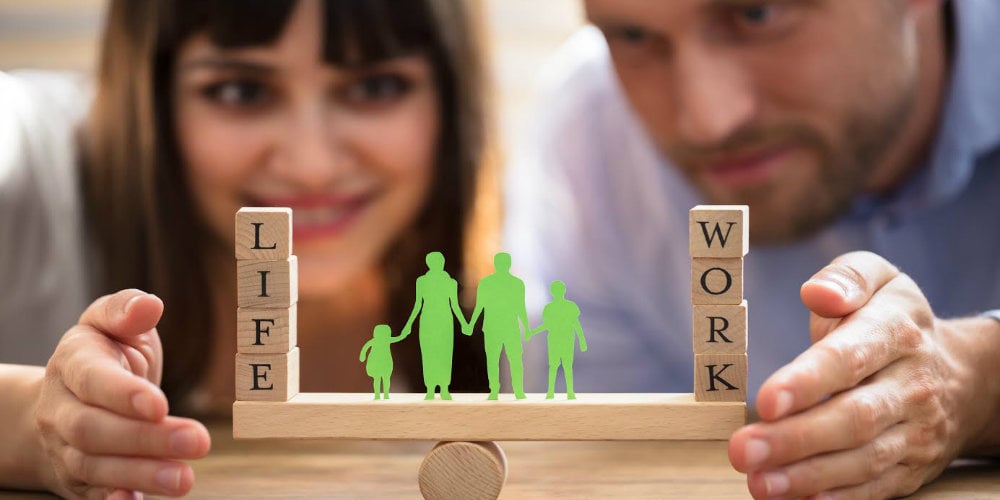Finding Harmony: The Transformative Power of Work-Life Balance
In the tumultuous year of 2020, marked by a global pandemic and personal challenges, I found myself on a seven-hour drive through the scenic landscapes of New England. The journey followed my second stint as a maid of honor at a wedding, capping off a year filled with fellowship applications, rejections, and the complexities of navigating life during a pandemic. Little did I know that this road trip would unravel a health mystery, leading me to a valuable lesson about the intricate connection between work-life balance and preventative care.
The Popping Ear Saga: As the elevation changed during the drive, my ears popped. While my left ear quickly returned to normal, the right one remained problematic for months. A visit to an ear, nose, and throat (ENT) specialist ensued, only to reveal normal diagnostic results. Frustration set in as even a seasoned doctor couldn’t offer a solution. However, a chance remark about job-related stress triggered a revelation. It turned out that my stress-induced teeth grinding, aggravated by a poorly fitted mouthguard, had caused a displacement leading to ear complications.
The Importance of Mental Well-being: This incident highlighted the transformative impact of mental well-being on physical health. What initially seemed like an invisible mental imbalance had manifested into tangible physical complications. This revelation urged me to explore ways to achieve a better work-life balance, emphasizing the importance of preventative care.
Decompressing Strategies:
- Time for Preparation:
- Combat choice paralysis by dedicating time to prepare for the week.
- Meal prepping and planning outfits in advance streamline daily tasks.
- Strategically plan work tasks in the lab to enhance efficiency.
- Comfortable Workspace:
- Allow remote work when possible to create a comfortable environment.
- Personalize the workspace to foster a positive and inspiring atmosphere.
- Acknowledge that even small changes in the work environment can counter stress accumulation.
- Self-care Prioritization:
- Listen to the body and mind, taking breaks when needed.
- Acknowledge the ebb and flow of productivity and adjust expectations accordingly.
- Prioritize individual well-being over relentless pursuit of work-related goals.
Navigating Challenges: Implementing these strategies hasn’t been without challenges. As a Ph.D. student with commitments and expectations, achieving work-life balance seemed daunting. However, through practice, I have gained confidence in managing time effectively and recognized the significance of being a well-rounded individual, not just a successful scientist.
The Reality of Stress: Despite my commitment to work-life balance, the final year of my Ph.D. program brought forth unforeseen challenges. Persistent and hard-to-manage stress led to a flare-up of mononucleosis, serving as a stark reminder of the delicate equilibrium between mental and physical health.

The Essence of Work-Life Harmony: Work-life balance is not a one-size-fits-all concept. It’s a dynamic equilibrium that requires periodic adjustments and fine-tuning. Recognizing the unique demands of different professions, the essence lies in creating a synergy where professional goals align with personal fulfillment. This equilibrium can positively influence productivity, job satisfaction, and overall life contentment.
Tangible Benefits: Studies consistently show that individuals with a healthier work-life balance experience reduced stress levels, improved mental health, and increased job satisfaction. Moreover, fostering an environment that values employees’ well-being contributes to enhanced creativity, innovation, and collaboration within organizations. It’s a symbiotic relationship where individual wellness fuels professional success and vice versa.
Practical Implementation: Adopting a balanced lifestyle is easier said than done, but small changes can yield significant results. Encouraging organizations to prioritize flexible work arrangements, promoting regular breaks, and fostering a culture that values mental health initiatives are crucial steps. Similarly, individuals can initiate mindfulness practices, set clear boundaries between work and personal time, and engage in activities that bring joy and relaxation.
In a world that often glorifies workaholism, my personal journey underscores the transformative power of maintaining a healthy work-life balance. The intricate connection between mental well-being and physical health cannot be overstated. Work-related stressors can manifest in unexpected ways, impacting both productivity and overall wellness. Prioritizing preventative care through lifestyle adjustments, stress management, and self-care practices can pave the way for a more fulfilling and sustainable life.
In conclusion, while I lack scientific data to support my claims, the narrative of my journey serves as a testament to the profound impact of work-life balance on our holistic well-being. As we navigate the complexities of our professional and personal lives, let us not underestimate the preventive power of finding harmony between the two.




